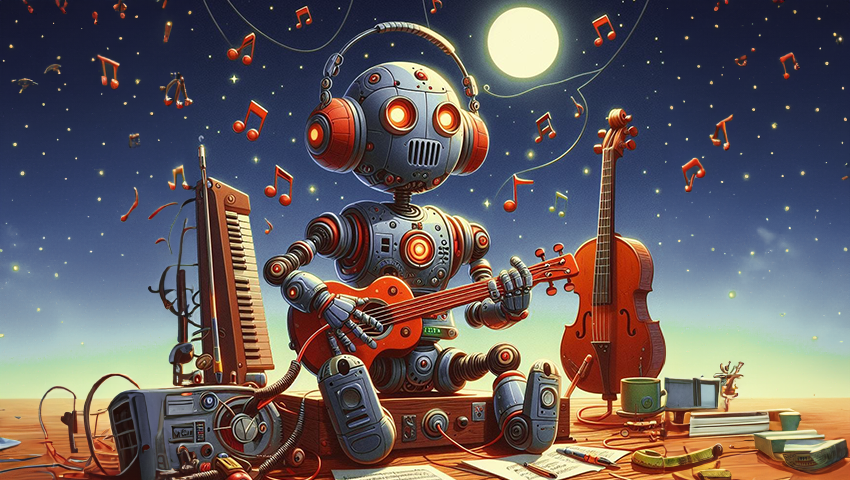
The art of AI music: exploring Udio and Suno music generators
Between the soft notes of a piano and the electrifying riffs of a guitar, lies the realm of AI music generators that harmonize imagination with technology: Udio and Suno. These platforms harness the power of AI to synthesize music on demand, revolutionizing the creation process and sparking both excitement and concern within the music industry.
Both systems share a common goal: to compose original, high-quality music from mere written prompts. Imagine typing out lyrics, specifying a story direction, or genre tags, and witnessing them weave those words into captivating melodies.
Founded in Cambridge, Massachusetts in 2023, Suno AI represents a leap forward in AI-generated music. Its creators: Michael Shulman, Georg Kucsko, Martin Camacho, and Keenan Freyberg – previously worked at companies like Meta and TikTok.
Currently, Suno’s v3 model can craft temporally coherent two-minute songs across various genres, making it a powerful tool for musical exploration. Last December Microsoft recognized Suno’s potential and integrated an earlier version of its engine into Bing Chat, now Copilot.
At its core, Suno AI harnesses the potential of machine learning, fortified by a vast reservoir of audio data. The model undergoes meticulous training using an extensive dataset encompassing various audio recordings.
However, the origins of Suno’s training data remain shrouded in mystery. Some experts speculate that it may have been trained on copyrighted music recordings without proper licenses or artist permissions.
Udio has only recently emerged as a sibling to its AI counterpart, Suno. Developed by a group of ex-DeepMind employees, this innovative service can synthesize high-fidelity musical audio from written text prompts, including user-provided lyrics.
Udio is more customizable, allowing users to create music in various styles and genres through powerful prompts. It starts with 30-second segments that can be extended to users’ specifications.
While the specifics of its music synthesis method remain undisclosed, it likely involves a diffusion model akin to Stability AI's Stable Audio. Both platforms dynamically generate vocals and offer additional options for refining and extending created songs.
In terms of output quality and user experience, Udio's songs may initially appear less impressive than Suno's, with experimentation revealing varying levels of refinement and coherence. However, both platforms exhibit potential for generating original music quickly, catering to diverse prompts and genres.
As AI-generated music gains prominence, questions about ownership and copyright arise. Both models share these concerns, as evidenced by Udio's measures to block tracks resembling specific artists and Suno's unresolved ethical questions about scraping musical work without artist permission.
Despite these concerns, both Udio and Suno represent significant advancements in AI music generation, offering users novel tools for creative expression and exploration. But as AI continues to push the boundaries of artistic creativity, the debate surrounding its impact on the music industry and the role of human musicians remains ongoing.
Explore the fascinating capabilities of Suno and Udio firsthand by watching our YouTube video.
